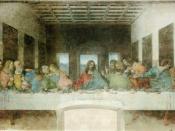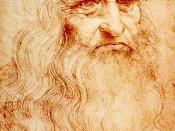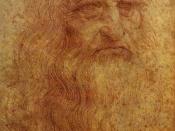Coloring and Painting
Painting is another type of symbolic language that we have discussed throughout the semester. These symbols gather emotions and meanings from the past, and are articulated through a colored two dimensional rendering. Paintings are an aspect of culture and represent the meanings in which one lives. Artists who paint, like all other arts, need to learn the visual vocabulary of their trade before they can begin their process of creation. This vocabulary has been developing since primitive time, ever since the first cavemen starting to paint animals on cave walls. These pictures have a very magical attribute about them; they extraordinarily seem very real. The major characteristic of a painting is how the artist uses and works with the light and darkness of the piece. This is by far the most important aspect of the drawing since the chiaroscuro has a profound effect on our moods. Amazingly, when light changes, feelings change.
Another important feature of paintings is that they suggest something very mysterious and unlimited. One can never cease, if they chose to, in interpreting a painting.
The painting in the medieval period was highly spiritualized and religious. The Italian prodigy, Giotto, was the foremost artist of this time. Most of his work was produced on frescos, or large wall paintings. His most revolutionary work was in two beautiful masterpieces, Faith, and The Mourning of Christ. Giotto's Faith depicts a matron with a large crucifix in her right hand, while holding a winding scroll in her left. The groundbreaking development Giotto started in this piece was his use of illusion to add depth to the two dimensional painting. Even though the matron is glued to the wall, her arms are extended to the viewer as if the paint on her hands is trying to come...


